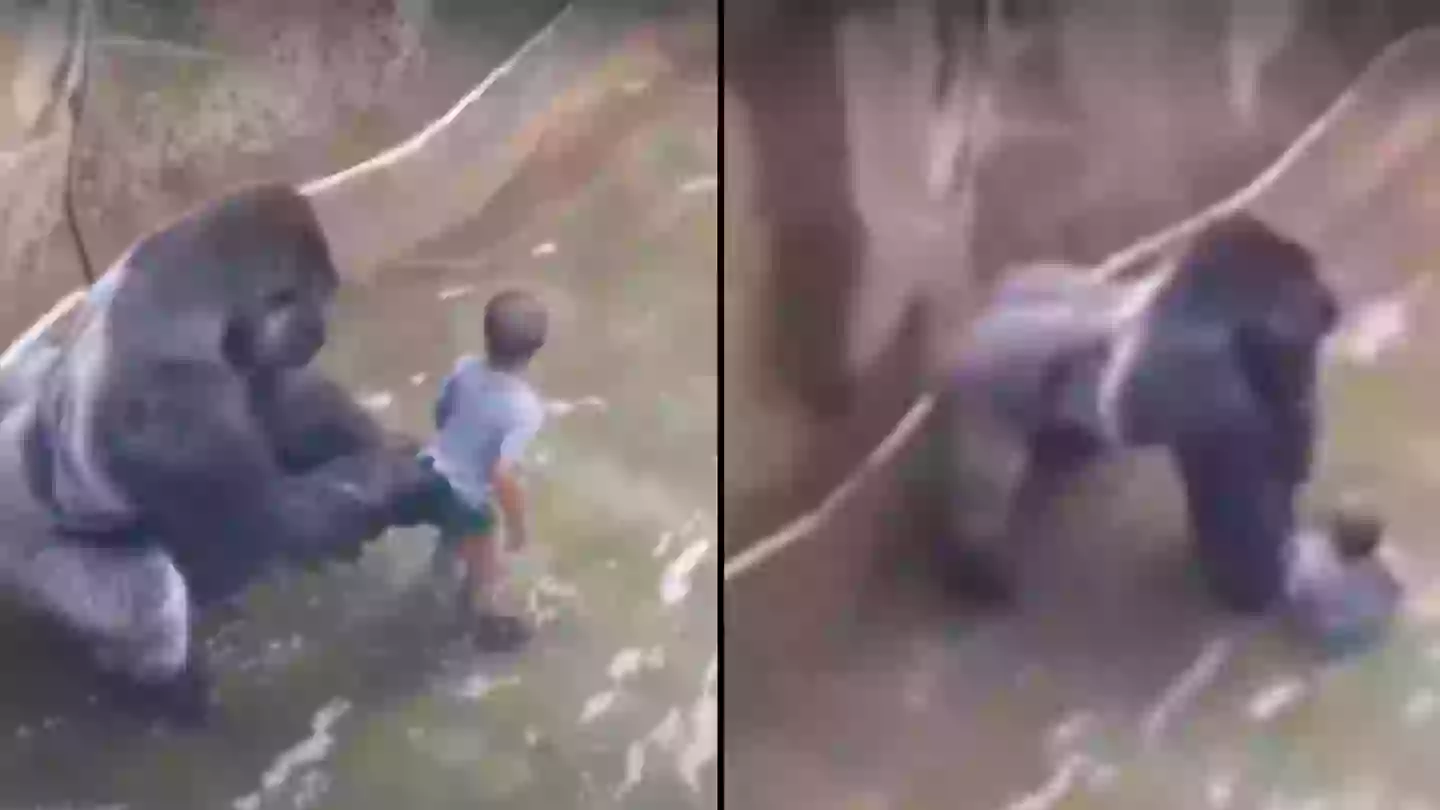
The family of the boy who fell into Harambe’s enclosure had to ‘go into hiding’ after facing huge backlash in the wake of the gorilla’s death.
Harambe was a 17-year-old silverback gorilla who was shot at the Cincinnati Zoo after a three-year-old Isaiah Dickerson managed to get into his enclosure.
With fears for the child’s life, zoo staff killed the huge gorilla, saying they were left with no choice.
Advert
After his death, Harambe became an unlikely internet sensation, with many questioning if a non-lethal response could have been used – while others were left wondering why he was in a zoo in the first place.
He is now at the centre of a new feature-length documentary, Harambe, which was released on Sunday 24 September to tie in with World Gorilla Day.
The film follows what happened to Harambe to explore the contentious topic of animal captivity, with a press release explaining: “Packed with rare unreleased photos and video of Harambe, the documentary features Narration by Peter Egan, along with exclusive interviews by Will Travers OBE and Dame Virginia McKenna of Born Free Foundation, wildlife expert Ian Redmond OBE, TMZ and Hollywood Raw podcast host Dax Holt, Dan Van Coppenolle [the man who named Harambe], and Jeff McCurry, Harambe’s personal photographer whose photo of Harambe went viral that became an iconic meme.”

The documentary discusses the various failures that many believe led to the incident, including the tiny 3ft barrier between the gorilla enclosure and the public.
Advert
Photographer Jeff McCurry, who was responsible for the viral snap of Harambe, said: “Children tried to get into that so often. I had a standard speech that I gave to their parents when I would stop them from whatever they were doing that was dangerous.
“I would tell them, ‘We’re not worried about the gorilla killing your kid – that's a 13ft fall to a cement floor. Your child is gonna die when it hits the floor'.
“But I mean, that was every day.”

But while the USDA found the zoo barriers were not safe, the outcry was against the mother of the little boy.
Advert
Narrator Pete Egan explains: “Petitions, death threats, local harassment by the public and terrible memes were used to express people’s anger about Harambe’s death.
“But this anger was misplaced and ruined the family’s life – forcing them off social media, and into living in hiding to keep Isaiah and his siblings safe.”
At the time of the backlash, Dickeron’s mother Michelle Gregg took to Facebook to urge others not to ‘judge’.

She wrote in a post that was later deleted: “As a society we are quick to judge how a parent could take their eyes off a child. Accidents happen, but I am thankful that the right people were in the right place.”
Advert
Hamilton County Prosecutor Joe Deters also felt at the time that the case didn’t meet the legal definition of child endangerment after the woman’s son fell into the exhibit while she attended to her three other kids.
“That parent must recklessly create a substantial risk to the health or safety of the child,” he said in a press conference.
Deters argued that the mother was neither reckless nor negligent – something many others have agreed with since.
McCurry added: “It was not their fault. You know, crazy stuff happens and it happened to them, but it’s not their fault.
“I just hope they don’t feel blamed because they’re not at blame, or at fault, at all – in any way.”
Topics: Harambe, Animals, US News, Documentaries